Chronic obstructive pulmonary disease (COPD) is a general term for long-term lung conditions that cause breathing difficulties, including emphysema and chronic bronchitis.
COPD is common among middle-aged or older smokers. It can be relatively mild and many do not realise they have it, however the shortness of breath tends to get gradually worse over time and can limit normal activities. Treatment and equipment can help keep the condition manageable.
If COPD is suspected, medical advice should be sought so action can be taken to prevent irreversible damage.
COPD occurs when the lungs become inflamed and damaged. Although non-smokers can sometimes be affected, it is most commonly caused by smoking and the likelihood of developing COPD increases with the duration and heaviness of smoking. COPD can also be caused by long-term exposure to harmful fumes or dust or by rare genetic disorders which cause the lungs to be more susceptible to damage.
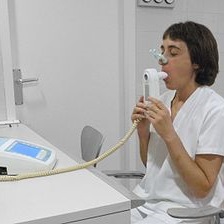
Using a Spirometer
The main symptoms of COPD are:
~ increasing breathlessness during activity
~ a persistent chesty cough - sometimes dismissed as a "smoker's cough"
~ recurring chest infections
~ wheezing
The symptoms usually get progressively worse, sometimes punctuated by flare-ups.
Investigations include Lung Function Tests (eg spirometry), Chest X-ray, CT scan, blood gas analysis and a blood test for Alpha-1 antitrypsin deficiency.
CT scan showing ephysema
COPD cannot be cured or reversed, but treatment can help control symptoms so that daily activities are not too badly affected. However, in some people, symptoms may continue to worsen, eventually having a significant impact on quality of life.
Every person with COPD should have an educational session and a personalized action plan.
COPD is largely preventable and in particular, avoiding smoking will drastically reduce the chances of developing the disease or subsequent progression.
Inhalers delivering short-acting bronchodilators such as Ventolin (Salbutamol) or Atrovent can open up the airways and help make breathing easier. Inhaled bronchodilators are used on an 'as needed' basis and are a mainstay of treatment. Corticosteroids can be prescribed as inhalers for milder symptoms.
Breathlessness can be helped by non-invasive ventilation or by supplemental oxygen for patients with respiratory failure at rest.
People with COPD are at risk of exacerbations (flare-ups), usually following airways infections. These can be treated by increasing the use of short-acting bronchodilators, if necessary combining a 'spacer' with an inhaler or via a nebulizer.
In more severe exacerbations, corticosteroid can be given as tablets or intravenously. In addition antibiotics, mucolytics or oxygen supplementation can also help during exacerbations.
With appropriate treatment, fewer than 20% of exacerbations result in hospital admission.
A small number of people with emphysema may be helped by more radical interventions such as bronchoscopic reduction of lung volume. In very severe cases lung transplantation might be considered.
It is important to maintain good general health and annual influenza and pneumococcal vaccinations to help reduce the risk of exacerbations.
Being either underweight or overweight can worsen the symptoms and outlook of COPD and diet should therefore be optimised. If there is associated malnourishment, vitamin C, D and E as well as zinc and selenium supplements can improve the strength of respiratory muscles and reduce shortness of breath.
The World HealthOrganization (WHO) recommends indoor temperatures between 18°C and 24° and, ideally. room humidity levels should be 30-50%.
Pulmonary rehabilitation, involving a specialised programme of exercise and education, has been shown to significantly improve quality of life and reduce hospital admissions and mortality.
Guidance is available regarding exercise, diet and coping with breathlessness and stress, as well as on living on the day-to-day living with the disability caused by COPD, both for the patient and carers.
If COPD moderately re severe, shortness of breath can make everyday activities and getting around more difficult. We have a wide range of products that can help you maintain a normal life. Examples include:
Mobility can be assisted by using walking aids, such as:
> walking sticks
> walking frames
> rollators
Most rollators have built in seats, so that you can easly stop and rest as you're walking along.
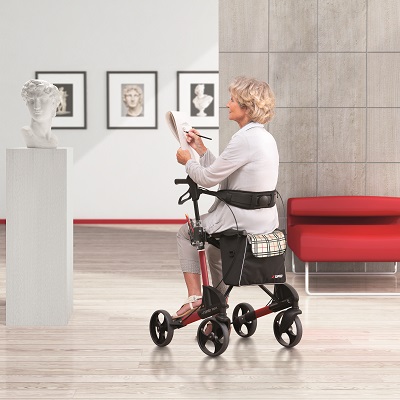
Perching stools can help you with activities that require standing for longer periods, such as working in the kitchen.
The StairSteady is a great way to help climb the stairs as it improves stability and lets you take a rest, while having something to hold on to.
.jpeg)
If shortness of breath becomes very severe, normal activities and mobility can become extremely difficult. Products like Riser Recliner chairs or SitnStand - a portable device to help with standing - and can help prevent complete inactivity.
We also have a wide range of products to help with bathing and toileting - for example bath-lifts or aids to help with standing from the toilet, for instance the motorised Solo toilet lift can help the patient use the toilet unaided.
Prolonged inactivity and lead to complications, the risk of which can be used reduced by using exercising equipment, like pedal exercisers that can be used while sitting or the Happylegs, 'seated walking machine'.
.jpg)
Riser Recliner Chair
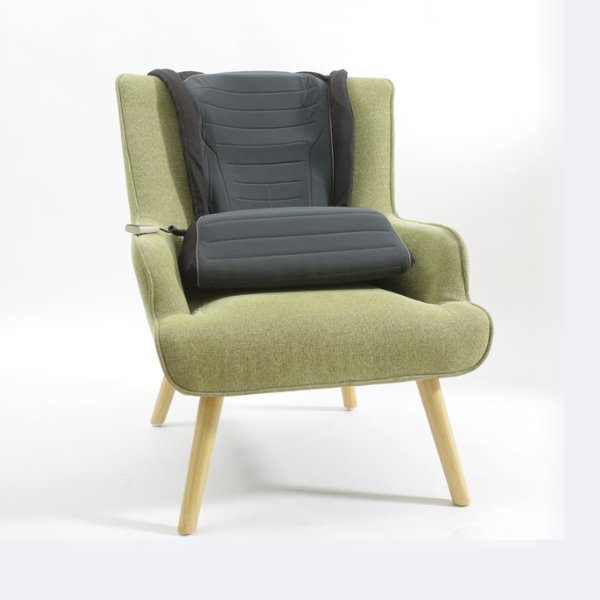
SitnStand
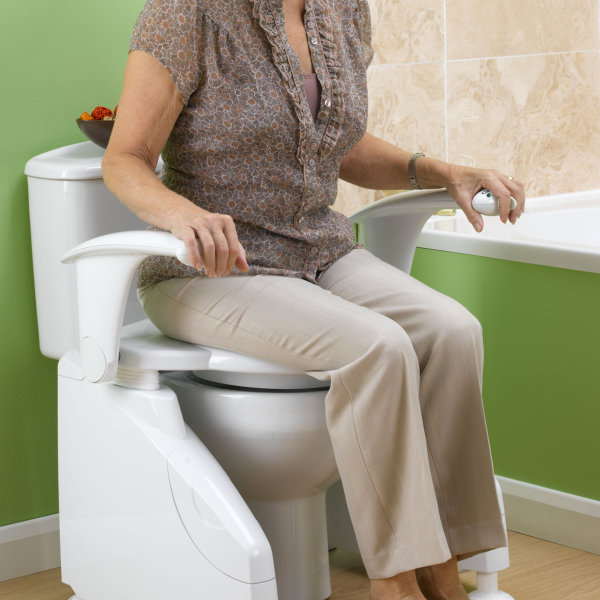
Solo Toilet Lift
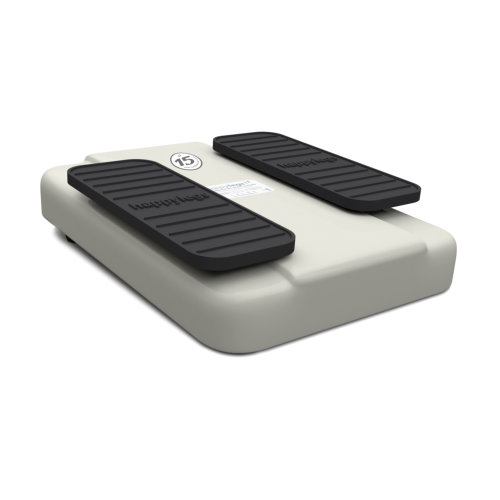
Happylegs
If mobility is very poor, it can cause social isolation which may be helped by products which allow the user to move around. Stairlifts can help with getting around the house, while wheelchairs, powechairs or mobility sooters and help with trips out of the house.
Our team of experienced staff can help find the right solutions for your needs. Contact us to find out more and if possible come to our Enfield showroom to try out the equipment for yourself.
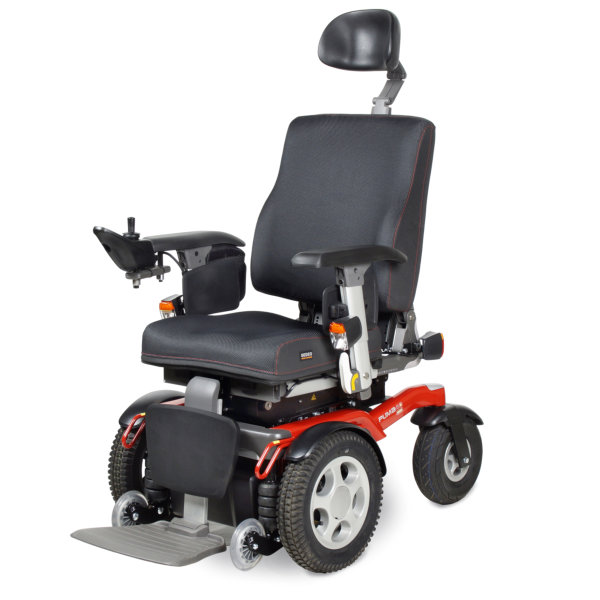
We stock a wide range of products, with over 1000 lines available in the showroom.
Come and TRY out the products to see what suits your needs.
Our friendly highly-trained staff will help you make a choice which is right for you.
Copyright © 2026 Fortuna Mobility | All rights reserved.